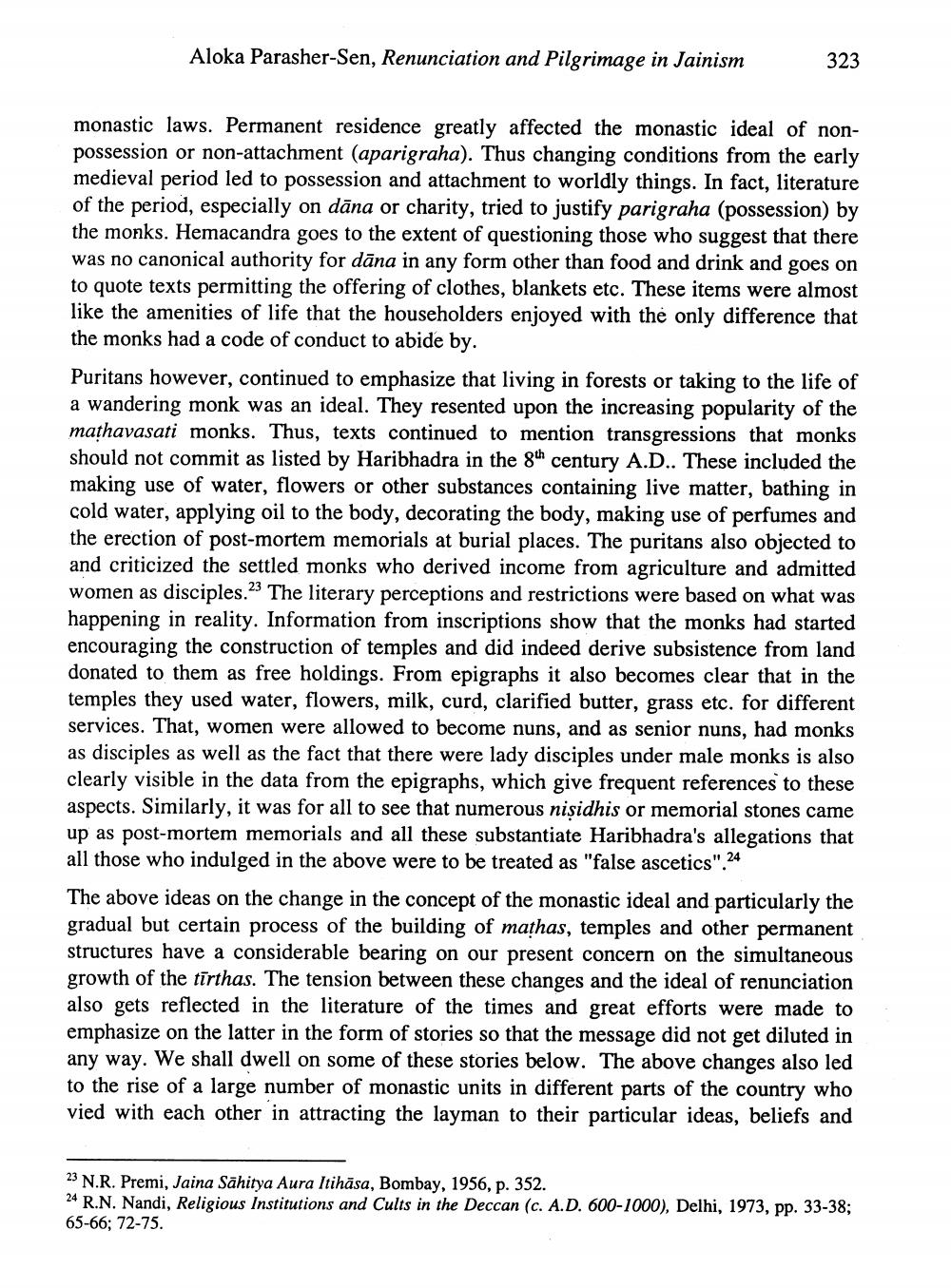________________
Aloka Parasher-Sen, Renunciation and Pilgrimage in Jainism
323
monastic laws. Permanent residence greatly affected the monastic ideal of nonpossession or non-attachment (aparigraha). Thus changing conditions from the early medieval period led to possession and attachment to worldly things. In fact, literature of the period, especially on dāna or charity, tried to justify parigraha (possession) by the monks. Hemacandra goes to the extent of questioning those who suggest that there was no canonical authority for dāna in any form other than food and drink and goes on to quote texts permitting the offering of clothes, blankets etc. These items were almost like the amenities of life that the householders enjoyed with the only difference that the monks had a code of conduct to abide by. Puritans however, continued to emphasize that living in forests or taking to the life of a wandering monk was an ideal. They resented upon the increasing popularity of the mathavasati monks. Thus, texts continued to mention transgressions that monks should not commit as listed by Haribhadra in the 8th century A.D.. These included the making use of water, flowers or other substances containing live matter, bathing in cold water, applying oil to the body, decorating the body, making use of perfumes and the erection of post-mortem memorials at burial places. The puritans also objected to and criticized the settled monks who derived income from agriculture and admitted women as disciples.23 The literary perceptions and restrictions were based on what was happening in reality. Information from inscriptions show that the monks had started encouraging the construction of temples and did indeed derive subsistence from land donated to them as free holdings. From epigraphs it also becomes clear that in the temples they used water, flowers, milk, curd, clarified butter, grass etc. for different services. That, women were allowed to become nuns, and as senior nuns, had monks as disciples as well as the fact that there were lady disciples under male monks is also clearly visible in the data from the epigraphs, which give frequent references to these aspects. Similarly, it was for all to see that numerous nisidhis or memorial stones came up as post-mortem memorials and all these substantiate Haribhadra's allegations that all those who indulged in the above were to be treated as "false ascetics" 24 The above ideas on the change in the concept of the monastic ideal and particularly the gradual but certain process of the building of mathas, temples and other permanent structures have a considerable bearing on our present concern on the simultaneous growth of the tirthas. The tension between these changes and the ideal of renunciation also gets reflected in the literature of the times and great efforts were made to emphasize on the latter in the form of stories so that the message did not get diluted in any way. We shall dwell on some of these stories below. The above changes also led to the rise of a large number of monastic units in different parts of the country who vied with each other in attracting the layman to their particular ideas, beliefs and
23 N.R. Premi, Jaina Sāhitya Aura Itihāsa, Bombay, 1956, p. 352. 24 R.N. Nandi, Religious Institutions and Cults in the Deccan (c. A.D. 600-1000), Delhi, 1973, pp. 33-38; 65-66; 72-75.




